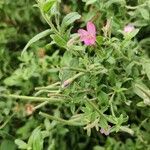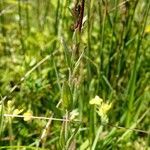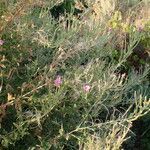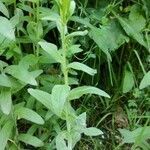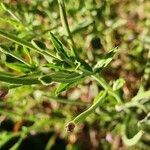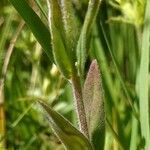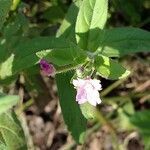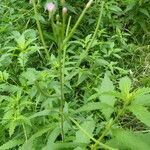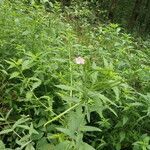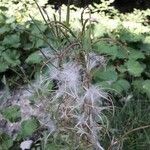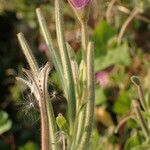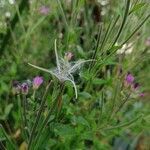Herbs robust, perennial, with short-stalked leafy basal rosettes. Stems 18-100(-160) cm tall, well-branched above, densely gray villous on lower part, mixed above with short glandular hairs, often with raised lines decurrent from margins of petioles. Leaves subsessile or lower ones with petioles 1-3 mm; cauline blade lanceolate-elliptic to narrowly lanceolate or oblong-lanceolate, 3-12 × 0.5-2.5 cm, both surfaces villous, base usually rounded, margin denticulate with 15-60 teeth per side, apex subacute. Inflorescence and flowers erect. Sepals 2.5-6 mm, keeled. Petals bright pink to dark purple, 4-8.5 mm. Stigma deeply 4-lobed. Capsules 3-7 cm, pubescent or rarely glabrescent; pedicels 0.5-1.8 cm. Seeds dark brown, 0.8-1.1 mm, coarsely papillose, with inconspicuous chalazal collar; coma tawny or dull white, detaching easily. Fl. Jun-Sep, fr. Jul-Oct. 2n = 36.
A herb that keeps growing from year to year. It is up to 1 m tall. The leaves are usually in rings but do not clasp the stem. The leaves are narrowly oval and 3-12 cm long by 1-3 cm wide. There are teeth along the edge. The flowers are 7-12 mm wide. They are pale purplish-pink.
Much like no. 2 [Epilobium hirsutum L.], but smaller, to 8 dm, the lvs 2–8 cm, sessile or subsessile but not clasping, the upper commonly alternate; pet 4–9 mm, deeply notched. European sp., intr. into wet places in Mich. and s. Ont. July–Sept.
